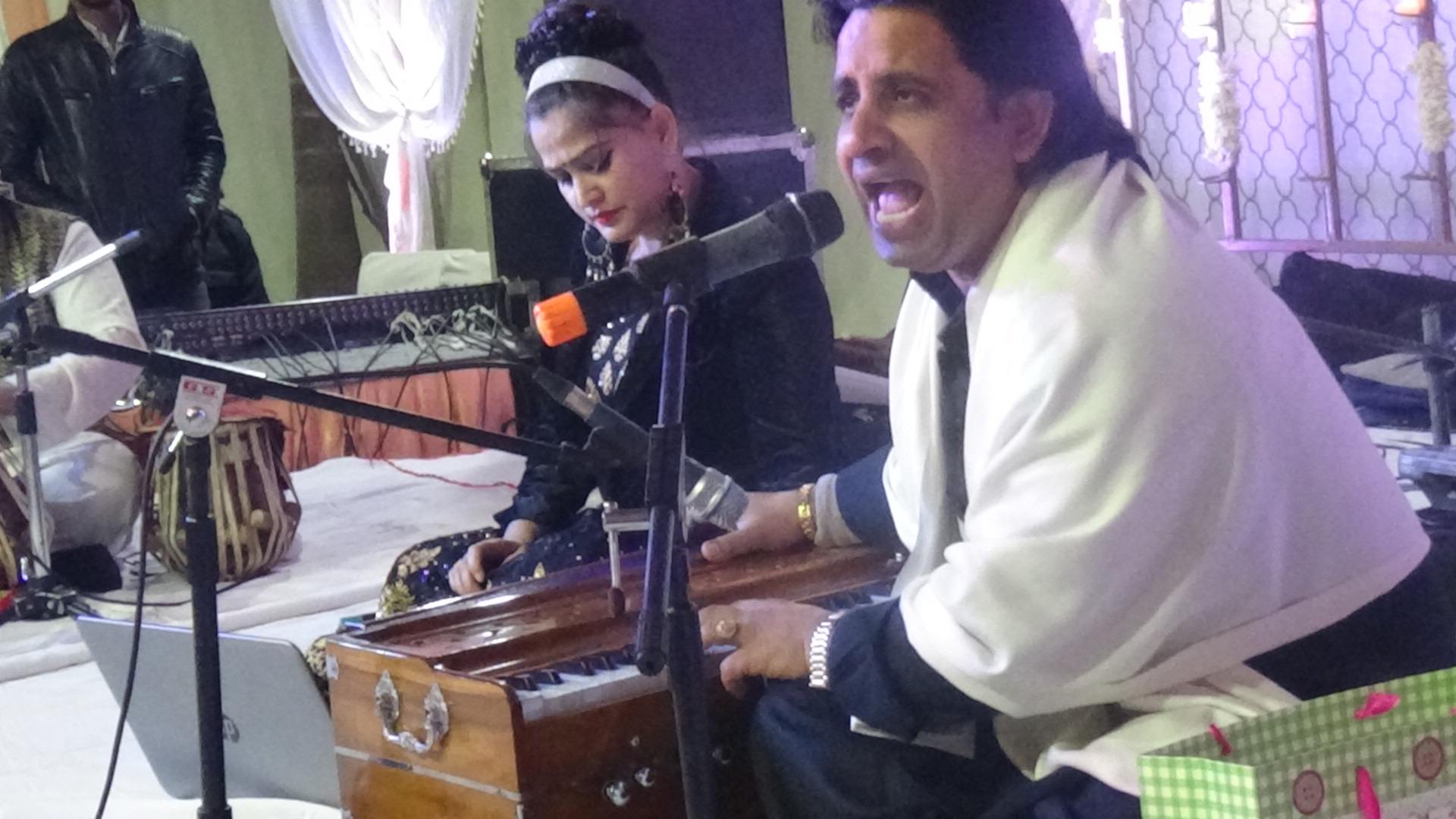\r\n Qawwali (Urdu: قوّالی (Nasta'liq); Punjabi: ਕ਼ੱਵਾਲੀ (Gurmukhi); Hindi: क़वà¥à¤µà¤¾à¤²à¥€; Bengali: কাওয়ালি) is a form of Sufi Islamic devotional music originating from the Indian subcontinent, and notably popular in the Punjab and Sindh regions of Pakistan; in Hyderabad, Delhi and other parts of India, especially North India; as well as the Dhaka and Chittagong Divisions of Bangladesh.
\r\n\r\n Originally performed at Sufi shrines or dargahs throughout South Asia, it gained mainstream popularity and an international audience in late 20th century. Qawwali music received international exposure through the work of the late Pakistani singers Aziz Mian, Nusrat Fateh Ali Khan and Sabri Brothers largely due to several releases on the Real World label, followed by live appearances at WOMAD festivals. Other famous Qawwali singers include Pakistan's Fareed Ayyaz & Abu Muhammad, Rahat Fateh Ali Khan, Badar Maindad, Rizwan & Moazzam Duo, the late Amjad Sabri and Bahauddin Qutbuddin. Most modern Qawwali singers including Ustad Nusrat Fateh Ali Khan and Fareed Ayyaz & Abu Muhammad belong to the famed 'Qawwal Bachon ka Gharana' school of Qawwali, which was based in Delhi.
\r\n\r\n
\r\n\r\n A group of qawwali musicians, called a party (or Humnawa in Urdu), typically consists of eight or nine men including a lead singer, one or two side singers, one or two harmoniums (which may be played by the lead singer, side singer or someone else), and percussion. If there is only one percussionist, he plays the tabla and dholak, usually the tabla with the dominant hand and the dholak with the other one (i.e. a left-handed percussionist would play the tabla with his left hand). Often there will be two percussionists, in which case one might play the tabla and the other the dholak. There is also a chorus of four or five men who repeat key verses, and who aid percussion by hand-clapping.
\r\n\r\n The performers sit cross-legged on the ground in two rows — the lead singer, side singers and harmonium players in the front row, and the chorus and percussionists in the back row.
\r\n\r\n Before the fairly recent introduction of the harmonium, qawwalis were usually accompanied by the sarangi. The sarangi had to be retuned between songs; the harmonium didn't, and was soon preferred.
\r\n\r\n Women used to be excluded from traditional Muslim music, since they are traditionally prohibited from singing in the presence of men. These traditions have changed, however, as is evident by the popularity (and acceptance) of female singers such as Abida Parveen. However, qawwali has remained an exclusively male business. There are still no mainstream female qawwals. Although kafi singer Abida Parveen has increasingly incorporated qawwali techniques into her performances, she is still not considered a qawwali singer.
\r\n\r\n
\r\n\r\n Songs are usually between 15 and 30 minutes long. However, the longest commercially released qawwali runs slightly over 115 minutes (Hashr Ke Roz Yeh Poochhunga by Aziz Mian Qawwal). The qawwali maestro Nusrat Fateh Ali Khan has at least two songs that are more than 60 minutes long.
\r\n\r\n Qawwalis tend to begin gently and build steadily to a very high energy level in order to induce hypnotic states both among the musicians and within the audience. Almost all Qawwalis are based on a Raga from the Hindustani classical music tradition. Songs are usually arranged as follows:
\r\n- \r\n
- \r\n They start with an instrumental prelude where the main melody is played on the harmonium, accompanied by the tabla, and which may include improvised variations of the melody. \r\n
- \r\n Then comes the alap, a long tonal improvised melody during which the singers intone different long notes, in the raga of the song to be played. \r\n
- \r\n The lead singer begins to sing some preamble verses which are typically not part of the main song, although thematically related to it. These are sung unrhythmically, improvised following the raga, and accompanied only by the harmonium. After the lead singer sings a verse, one of the side singers will repeat the verse, perhaps with his own improvisation. A few or many verses will be sung in this way, leading into the main song. \r\n
- \r\n As the main song begins, the tabla, dholak and clapping begin. All members join in the singing of the verses that constitute the refrain. The lyrics of the main verses are never improvised; in fact, these are often traditional songs sung by many groups, especially within the same lineage. However, the tunes are subtly improvised within the framework of the main melody. As the song proceeds, the lead singer or one of the side singers may break out into an alap. Nusrat Fateh Ali Khan also popularized the interjection of sargam singing at this point. The song usually builds in tempo and passion, with each singer trying to outdo the other in terms of vocal acrobatics. Some singers may do long periods of sargam improvisation, especially alternating improvisations with a student singer. The songs usually end suddenly. \r\n
\r\n The singing style of qawwali is different from Western singing styles in many ways. For example, in words beginning with an "m", Western singers are apt to stress the vowel following the "m" rather than the "m" itself, whereas in qawwali, the "m" will usually be held, producing a muted tone. Also in qawwali, there is no distinction between what is known as the chest voice and the head voice (the different areas that sound will resonate in depending on the frequency sung). Rather, qawwals sing very loudly and forcefully, which allows them to extend their chest voice to much higher frequencies than those used in Western singing, even though this usually causes a more noisy or strained sound than would be acceptable in the West.
\r\n\r\n
\r\n\r\n Qawwali and Sufi Singers Official Page Click Here
\r\n\r\n
\r\n\r\n Performance Video Click Here




